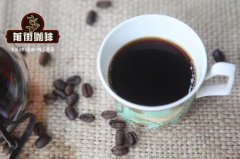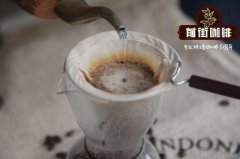Do you know the characteristics of Castillo coffee beans? what kind of coffee beans are iron card round beans?

Professional coffee knowledge exchange more coffee bean information please follow the coffee workshop (Wechat official account cafe_style)
Castillo is one of the most characteristic examples of coffee derivatives, and it also symbolizes the development of coffee species. Nowadays, many coffee-derived varieties are more or less derived from human intervention and hybrid variation. The main purpose and dream of human beings is to create high-quality varieties with high yield, stronger resistance to diseases and insect pests and higher cup testing quality.
You can't have both fish and bear's paw. High-quality coffee means low yield and resistance to diseases and insect pests. If you want to be high-yielding and resistant to diseases and insect pests, you can only use grafting with Robusta to achieve, resulting in a decline in cup test quality. However, there are exceptions. Among the Kenyan coffee varieties, the SL family began to cultivate a large number of coffee varieties during the imperial period in order to achieve high yield, but the farmers adjusted the cup test quality of the variety series to be incredible. The diseases and insect pests of coffee plants are the main culprit in coffee production in America.
However Colombia has made remarkable achievements in improving varieties to address this problem. Castillo, like other derived varieties, has many prejudices on the market today: the quality of the cup test is so unsatisfactory that it gives people the intuition that it cannot compete with Kaddura, which is low-yield and more vulnerable to insect pests. The point is that in the world of coffee, it is extremely foolish to judge whether coffee is good or bad by variety alone. For example, some varieties produce very high-quality coffee in Kenya, but not so well in El Salvador.
Michael Sheridan is working on a research project on the quality of coffee-growing soil, in which, in order to prove that people's intuitive perception of Castillo is transferred, cup testers are blindly tested to find out which likes Castillo or Kaddura better. Sheridan's research results are sufficient to prove that under the same planting conditions, it is unfair and futile to strive to test the quality of Castillo cups better than Kaddura. What we need to know is what planting conditions are most suitable for Castillo.
There are many reasons why round beans are formed. One is that coffee beans usually grow at the top of branches and have a high chance of forming. It generally accounts for only 510% of the total output of the whole tree. The other is that during the growth of coffee beans, two flat beans can not develop normally in the coffee fruit because of the interference of the growth environment (malnutrition, drought, diseases and insect pests, etc.).
Coffee is a dicotyledonous plant, usually in the development of two or more beans, because the growth of one of the two flat beans is not strong enough, the other side robs more nutrients into the form of round beans, while the other will wilt and stop developing. In the picture below, coffee beans grow in the way of twins, one of which stops developing, and the strong one grows into round beans.
Usually, the size of round beans is much smaller than that of flat beans. Yega Snow, which has always been famous for its small and exquisite body, is even more mini. Grasping a handful of raw beans in your hand is like grabbing a handful of wheat kernels. Just looking at its lovely appearance feels very pleasant. The picture on the right shows PB Top in Kenya. The varieties are SL28 and SL34,SL28, which are drought-tolerant, while SL34 is moisture-tolerant. The real top Kenyan coffee comes from these two varieties.
END
Important Notice :
前街咖啡 FrontStreet Coffee has moved to new addredd:
FrontStreet Coffee Address: 315,Donghua East Road,GuangZhou
Tel:020 38364473
- Prev

What are the common types of coffee beans? what are the characteristics of the comparison of common coffee beans?
Professional coffee knowledge exchange more coffee bean information please follow Coffee Workshop (Wechat official account cafe_style) Tibica (also known as Typica) Tibica is the native species of all Arabica varieties. It is said that Tibika originated in southern Sudan, flourished in Ethiopia and was finally planted in Yemen for commercial production around the 7th century AD. Emperor
- Next

Learn about the planting and characteristics of Tibika Coffee Tree | what is the relationship between iron pickup and coffee
Professional coffee knowledge exchange more coffee bean information Please pay attention to the coffee workshop (Wechat official account cafe_style) Iron pickup coffee was first grown commercially, because of the Dutch dedication to coffee. In the early days when there was a boycott of coffee in Europe, the Dutch already wanted to grow coffee in order to carry out global trade. (coffee beans from Central and South America) but the Dutch
Related
- Beginners will see the "Coffee pull flower" guide!
- What is the difference between ice blog purified milk and ordinary milk coffee?
- Why is the Philippines the largest producer of crops in Liberia?
- For coffee extraction, should the fine powder be retained?
- How does extracted espresso fill pressed powder? How much strength does it take to press the powder?
- How to make jasmine cold extract coffee? Is the jasmine + latte good?
- Will this little toy really make the coffee taste better? How does Lily Drip affect coffee extraction?
- Will the action of slapping the filter cup also affect coffee extraction?
- What's the difference between powder-to-water ratio and powder-to-liquid ratio?
- What is the Ethiopian local species? What does it have to do with Heirloom native species?

